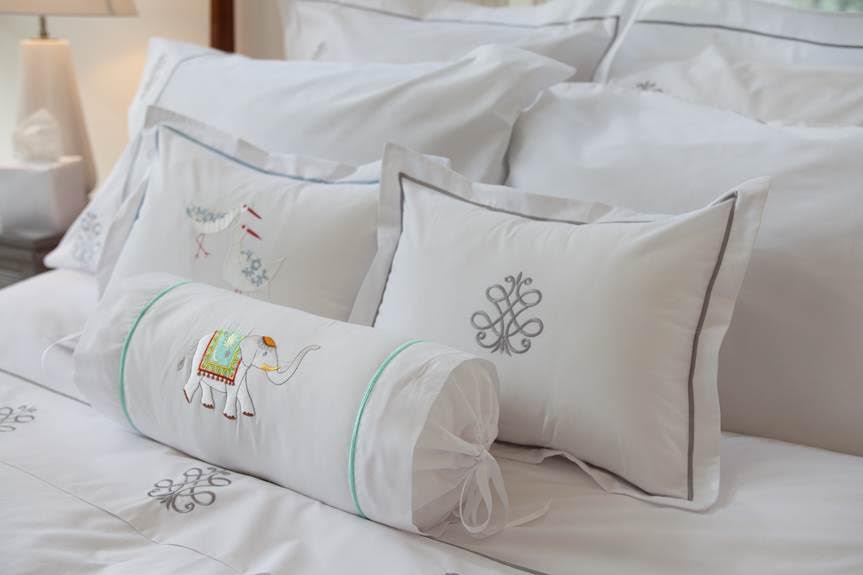Packing bedding and linens for a move is one of the most straightforward tasks during the relocation process. However, you still need to be careful. You want your soft goods, regardless of if they’re made of linen, cotton, or satin, to arrive in perfect condition – safe, clean, and ready to use. Don’t worry; we’re here to assist you with this task. We’ve prepared tips that will help you streamline the process and make packing your bedding and linens even easier.
A few tips on organizing a stress-free move
Before we reveal the easiest ways for packing bedding and linens for a move, we’ve prepared five tips to help you organize a smooth relocation:
- Set a moving budget – Moving can be costly, so you need to analyze all potential expenses and set a realistic budget. As the moving consultants from A2B Moving and Storage suggest, you have to know how much you can spend on your relocation expenses and choose the services you need accordingly.
- Hire reputable movers – Experienced and reliable movers are crucial to making your relocation as simple and easy as possible.
- Take your time – Don’t wait until the last minute to start preparing for your move. Instead, take your time and start decluttering and packing ahead of time.
- Gather packing supplies – Make a list of packing supplies you’ll need and buy them.
- Pack smart – Make sure to pack in a way that will make unpacking easier. For example, make an inventory and label the boxes.

Packing bedding and linens for a move
Here are our tips for packing bedding and linens in a way that will ensure nothing from your sheet sets to bolsters gets damaged. Also, you’ll find advice on how to make the first night at your new place go more smoothly.
Prepare Yourselves for the Move
Before you start packing your bedclothes and linen, make sure to prepare packing supplies. Get the house ready and your children organized for the move ahead.
As bedding, blankets, and towels can be used as packing material, it is good to set some of them aside. You can use them as padding for your moving boxes to prevent damage.
Tackle one room at a time
When packing your bedding for a move, you want to be strategic and pack one bedroom at a time. It will help keep you organized. The best way to go is to take out all the bedding and linens you have in one room and place it on the bed. Sort it accordingly, so it’s easier to pack, and don’t forget to label the boxes. It will be that much easier to unpack when you arrive at your new home.
Handle bedding and linens last

The best way to go is to hold off packing your bedding and linens and deal with them last. You will be using them until moving day, especially your bedclothes. Also, as have we already mentioned, you can use these items for padding, so you might need them for that reason. Any surplus sheet, towel, or pillow you don’t use daily can be great to fill out empty spaces in the boxes and prevent shifting and potential damage.
Wash bedding and linens and fold them carefully
Before you pack your sheets, covers, and pillows, make sure to wash them first. You also might be tempted to save time by tossing them into a moving box, but try not to do this. Not only will they take up more space this way, but you will also create more work when you move into your new home. Nobody likes crumpled sheets, and even fitted sheets are not difficult to fold and pack! Therefore, carefully fold each item to be as flat as possible. This way, you’ll save space and ensure your bedding and linens are ready to use as soon as you take them out of the moving box.
Use plastic bags to protect linens
As you want to prevent any potential damage from moisture and dirt, make sure to wrap your linens and bedding in plastic bags before placing them into moving boxes. Regular trash bags should do the trick. You can even transfer them in plastic bags and skip boxes. However, boxes offer an extra layer of protection as plastic bags can easily tear, especially during transit. The good idea is to use vacuum bags because they will save you a lot of space.
Set bedding aside for the first night
When you move into your new home, you’ll need clean bedding, pillows, and towels for the first night. For that reason, make sure to put some of them aside for everyone who needs them. Make sure to label each box, so it’s easier for you to find them. You’ll have to admit that it will be nice to crawl into a warm bed with fresh and clean linens after a tiring day of moving. Nothing beats resting your head on a pillow with a freshly washed pillow cover after a long day.
Make an inventory and label everything
The first night box isn’t the only one that needs to be labeled. It will be much easier for you to unpack and find anything you might need. Also, make sure to create an inventory. It will help you keep everything organized and save you from having a meltdown trying to find extra towels or bedding you might need. All you’ll have to do is check your list and find the box with the corresponding label on it.
Good luck with your move!
We hope our tips have made packing bedding and linens for a move easier and quicker for you. Best of luck with your relocation!










